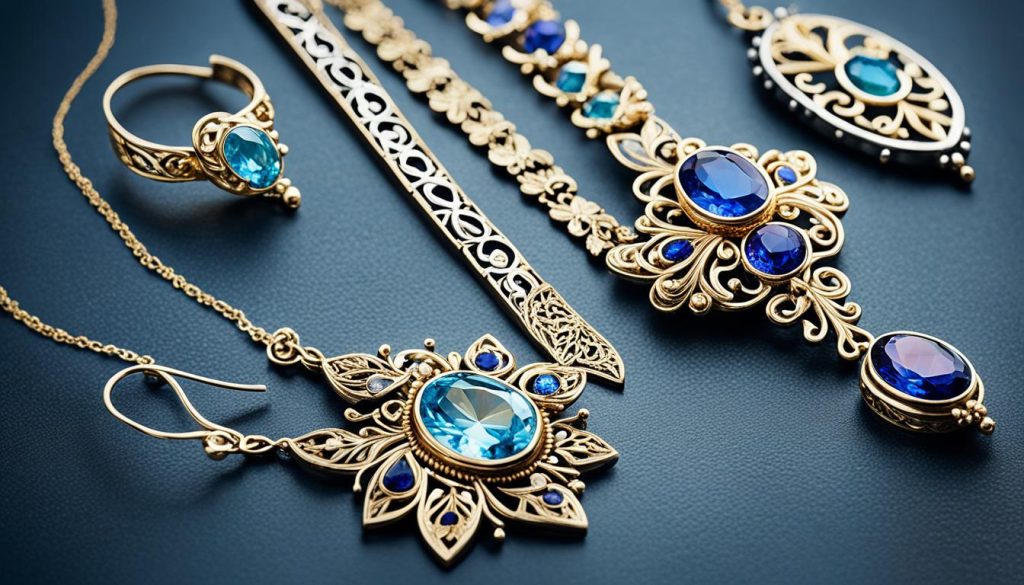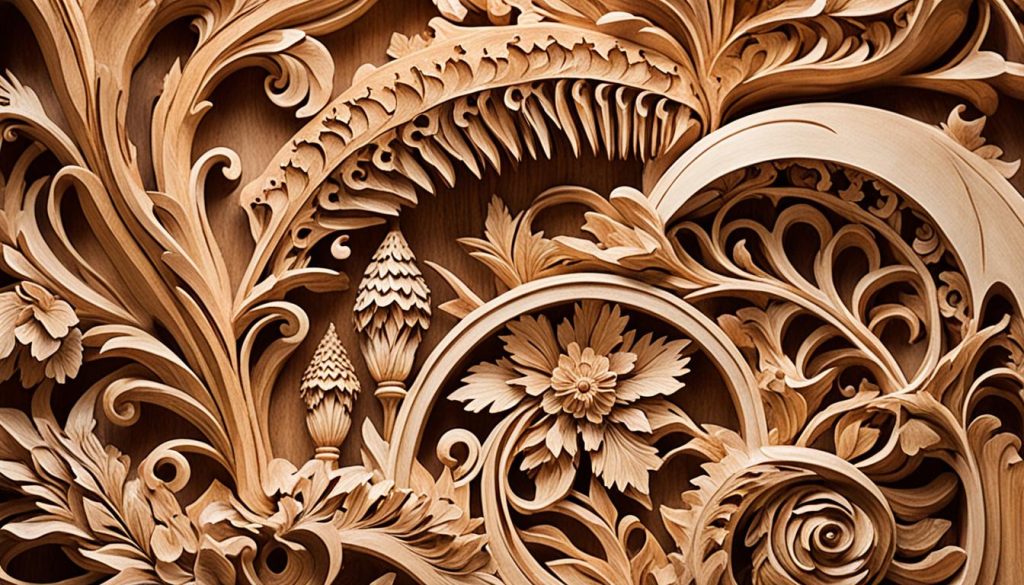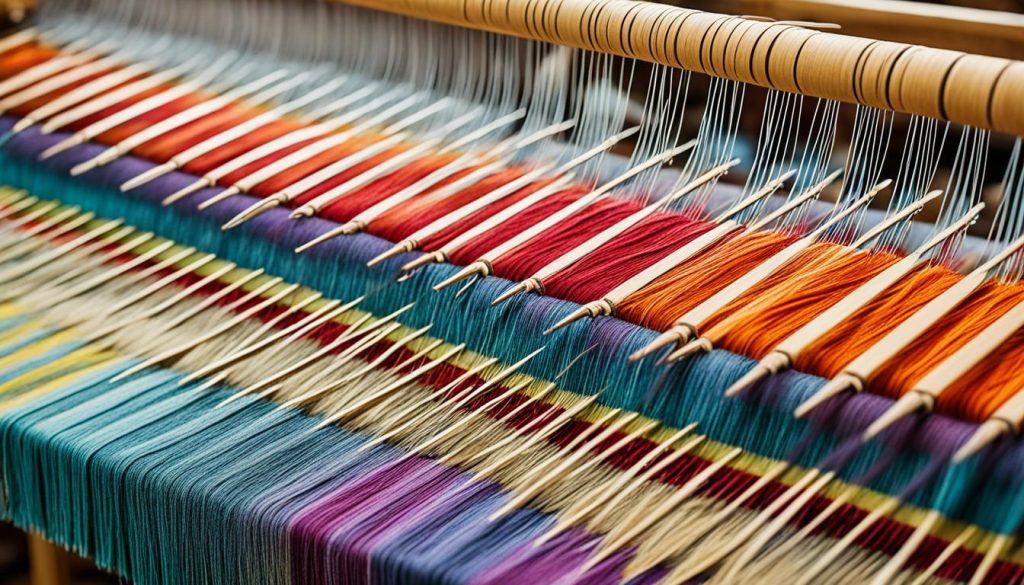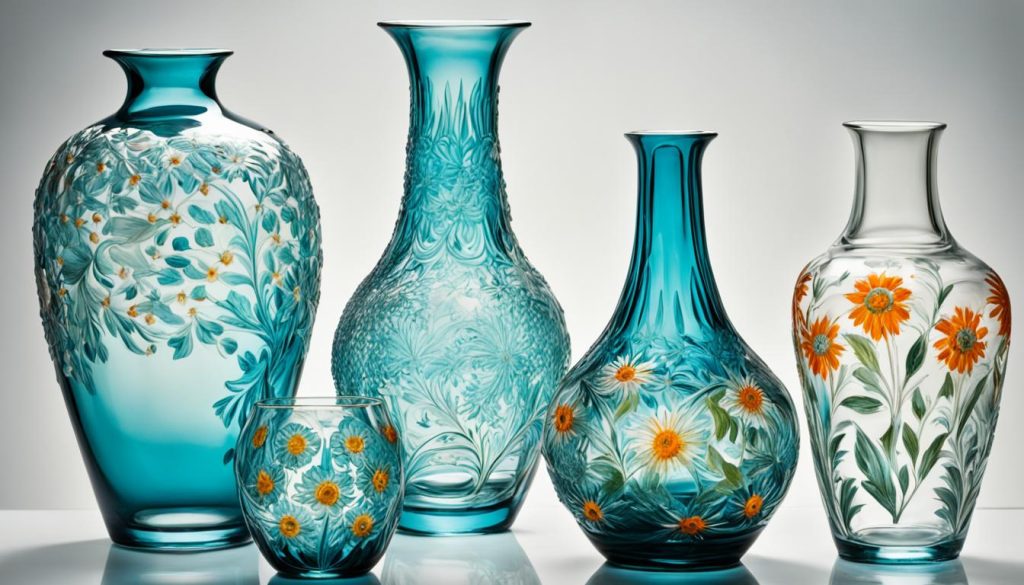Czech craftsmanship is a key part of Europe’s handicraft history. It’s known for top-notch heritage and skill. The work ranges from complex glass making to fine porcelain crafting.
Using top materials and age-old methods, Czech art shows great care in every detail. These skills, shared from one generation to another, are vital to Czech craft heritage. They are celebrated both in Czechia and worldwide.
The unique mix of traditional and new ideas keeps Czech craftsmanship vibrant. It adds to the country’s cultural identity and boosts its global arts and crafts reputation.
Key Takeaways
- Czech craftsmanship is a pivotal part of European handicrafts.
- Renowned for its rich heritage and traditional Czech artistry.
- Makes extensive use of quality materials and meticulous techniques.
- Contributes to both the domestic and international markets.
- Blends tradition with modern innovation.
The Historical Roots of Czech Craftsmanship
The rise of Czech craftsmanship began in Medieval Bohemia. Czech artisans of that time were mastering various crafts that shaped the region’s art. The influence of Germanic, Austrian, and Italian styles was significant. It helped blend foreign techniques with Bohemian traditions.
Early Beginnings in Medieval Bohemia
Early Czech artisans excelled in carpentry, metalworking, and pottery. Their work laid the foundation for a unique Czech art style. Inspired by nature, folklore, and religion, their creations featured detailed designs and were practical. Over time, these works showed a mix of local and outside influences.
Influences from European Neighbours
European influence played a big role in the growth of Czech craftsmanship. Artisans from Germany, Austria, and Italy brought new skills. This mix resulted in a diverse and rich craft tradition in Bohemia. Through trade and alliances, Czech craftsmen were able to innovate and broaden their artistic horizon.
Evolution Through the Renaissance
The Renaissance greatly influenced Czech crafts. It brought advanced techniques and a focus on humanism, proportion, and perspective. Czech artists started to produce fine jewellery, glassware, and textiles with elaborate designs. This era marked a significant advancement in Czech artistry, combining old ways with Renaissance innovations.
The Significance of Bohemian Glass
Bohemian crystal, also known as Czech crystal, is a jewel of Czech craftsmanship. It’s known for its excellence and beautiful design. Crafted with glass blowing, cutting, and detailed engraving, it’s a work of art. These methods have been refined over centuries, celebrating Czech glass skill.
Techniques and Methods
The creation of Bohemian crystal requires attention to detail. Glass blowing forms unique shapes, while mould blowing creates patterns. Cutting adds precise edges, and engraving brings in artistic designs. These long-standing techniques are shared across generations. They mix tradition with modern touches.
Global Recognition and Export
Bohemian crystal is celebrated globally for its quality and timeless beauty. The Czech Republic exports this glassware everywhere, from homes to galleries. Events like the International Glass Symposium in Nový Bor highlight Czech glass talent. Institutions like The Museum of Glass and Jewellery in Jablonec nad Nisou and the Czech Trade Promotion Agency boost its profile and export.
The Fame of Czech Porcelain
Czech porcelain is known all over the world for its beauty. It is called the ‘white gold’ of the Czech Republic. Its designs are detailed and the quality is top-notch.
Karlovy Vary is at the heart of this tradition. It’s a town famous for making porcelain. Karlovy Vary porcelain combines old methods with new styles. This makes it liked by many.
The making of Czech porcelain started a long time ago. This tradition is still alive today. For example, Thun 1794 a.s. is the oldest porcelain factory. It’s known for its high-quality products that are praised worldwide.
To really understand Czech porcelain’s importance, let’s look at some key points:
| Aspects | Description |
|---|---|
| Historical Significance | The tradition goes back centuries. It’s based on ancient craftsmanship. |
| Manufacturing Hubs | Karlovy Vary among other famous Czech towns. |
| Recognised Craftsmanship | The porcelain is shown in global exhibitions and luxury markets. |
| Design Integration | It includes both old designs and modern looks. |
Czech porcelain keeps charming people all over the world. Its beauty and high quality are unbeatable.
Intricate Lace-Making Traditions of the Czech Republic
The Czech Republic is known for its deep-rooted lace-making tradition. Czech bobbin lace is a highlight of this textile heritage. It’s been passed down through generations, representing cultural identity and artistic skill.
History of Bobbin Lace
Bobbin lace-making in the Czech lands started during the Renaissance. It once was exclusive to the elite’s clothing and linens, showing off wealth and taste. Over time, it absorbed influences from Europe, developing a unique style with complex patterns and innovative methods.
Modern Applications and Revival
Now, Czech bobbin lace is experiencing a revival. Its integration into modern fashion and décor shows its timeless charm. Thanks to efforts in education and workshops, this craft’s techniques continue to be shared. The movement not only celebrates the Czech textile legacy but also showcases the craft’s flexibility for today’s world.
| Aspect | Historical Usage | Modern Applications |
|---|---|---|
| Czech Bobbin Lace | Decoration for garments and linens | Fashion design, interior accessories |
| Lace-Making Traditions | Craftsmanship skill passed through generations | Educational programmes and workshops |
| Textiile Heritage | Symbol of cultural identity and artistry | Incorporation into contemporary designs |
The Art of Czech Puppet Making
The art of Czech puppet making is a captivating tradition. It brings generations together through imaginative stories and superb marionette craftsmanship. More than just fun, it explores cultural and historical tales. Around the world, Czech puppetry is known for its beauty and skill. It showcases a deep cultural heritage.
Symbolism and Craftsmanship in Puppetry
Symbolism is key in puppet arts, with marionettes often symbolising folklore or historical figures. The marionette craftsmanship is highly detailed and innovative. These practices have been honed over centuries. Made from wood, papier-mâché, and fabric, these puppets are not just art. They also carry Czech stories, touching hearts and teaching lessons to all.
Contemporary Puppet Artists
Modern times have seen Czech puppetry flourish, thanks to current puppet artists. They respect old methods but also add new ideas. This results in works that appeal today. The National Marionette Theatre in Prague and the Biennial of Puppetry Art are two key places. They show off new puppet arts, keeping the tradition alive and evolving. These spots are crucial for the growth and memory of Czech puppetry.
Czech Jewellery Design

Czech jewellery is known for its superb craftsmanship and striking designs. It reflects the nation’s rich art heritage. Designers create pieces with intricate art and famous Garnet jewels, using local materials. Among these, the Bohemian Garnet is most sought-after. This art is unique, blending tradition with modern styles in every piece.
Czech jewellery makers have gained fame worldwide, showing their work at top jewellery fairs. These events prove their work’s beauty and the global love for Czech artisan jewellery. The Turnov Garnet Museum and the Association of Jewellery and Diamond Industry play key roles. They help keep this precious craft alive and well-known.
Let’s look at how Czech jewellery stacks up against other famous styles:
| Attribute | Czech Jewellery | Other Notable Styles |
|---|---|---|
| Main Material | Bohemian Garnet, locally sourced precious metals | Various gemstones, imported materials |
| Design Inspiration | Blend of historical and modern influences | Primarily traditional or contemporary |
| Global Recognition | High, known for uniqueness | Varies, often high for specific styles |
| Craftsmanship Level | Highly skilled, artisanal | Ranges from high-end to mass production |
The way Czech jewellery design is evolving is fascinating. It stays true to its historical roots while embracing new ideas. This ensures it will continue to shine both now and in the future.
Traditional Czech Folk Costumes
Traditional Czech folk costumes, or ‘kroje’, show off the Czech culture and identity. They shine in bright colours and local designs, especially at festivals. These outfits are more than fashion; they’re a source of pride at cultural events.
Elements and Motifs
Each piece of Czech folk dress is made with great care, showing off differences from region to region. You’ll see beautifully stitched blouses and vests with traditional patterns. Look for lots of colours and detailed designs like flowers and shapes.
The fabrics and decorations, including lace and ribbons, make every outfit special.
Festivals and Traditions
In Czech culture, folk dresses are important at festivals and traditions. The Strážnice International Folklore Festival and the annual Harvest Festival let people show off their heritage. It’s more than just looking good; it’s celebrating Czech history and traditions.
Wearing regional kroje brings people together, keeping their culture alive for future generations.
The Craft of Ceramic Pottery
The Czech Republic is famous for its ceramic pottery. This tradition is known for its beautiful artistry and timeless beauty. It combines a wide range of styles and techniques, showing history and new ideas. Czech potters are skilled in making pieces that are both useful and beautiful works of art.
Unique Styles and Techniques
Czech pottery comes in many styles and techniques. From traditional shapes passed down through families to new, bold designs, it keeps changing. Potters use methods like wheel throwing, hand-building, and detailed glazing. This results in a rich collection of ceramics that show Czech creativity.
Notable Ceramic Artists
Czech ceramic artists are known for their skill and new ideas. They mix old ways with new to make unique pieces that collectors love. Important artists include Helena Johnová and Otto Eckert. Their work has won praise in Czechia and around the world. Their art shows why Czech pottery is so special and varied.
| Artist | Notable Works | Exhibitions |
|---|---|---|
| Helena Johnová | Figurative Sculptures, Decorative Plates | National Gallery Prague, International Ceramics Biennale |
| Otto Eckert | Abstract Vases, Functional Pottery | Prague Design Week, European Ceramic Context |
Stunning Woodwork in Czech Artistry

The Czech Republic boasts a rich history of beautiful woodcraft. This tradition highlights incredible skill and artistic flair. Czech woodworking, including carving and fine craftsmanship, is a key part of its culture.
Noteworthy Woodcraft Regions
Many areas in the Czech Republic are known for their special woodcraft. Each region has its own style and specialities:
- Wallachia: Famous for traditional crafts, it makes practical yet ornate tools and household objects.
- Bohemia: Known for detailed sculptures and religious pieces that showcase top-notch skill.
- Moravia: Renowned for furniture making, featuring fine joinery and sophisticated styles.
Expert Techniques and Finishes
Czech artisans use many skilled techniques to produce amazing works. They excel in carving, inlaying, and marquetry, creating strong and detailed art. These methods give life to both useful and ornamental items. Fine wood pieces in the Czech Republic also have special finishes. Varnishes and stains bring out the wood’s natural appeal and ensure it lasts a long time.
Preservation of Czech Craftsmanship Heritage
In the Czech Republic, saving the traditional crafts is vital. Many cultural groups work hard to keep this history alive. Through special programs, they try to keep the old ways of making things from disappearing.
Efforts by Museums and Institutions
Many institutions are key in saving these crafts. The Czech National Heritage Institute is one such place. It shows off traditional techniques in its exhibits.
Open-air museums let visitors see craftsmen at work, giving a peek into the past. Universities help too, by studying and teaching these age-old arts.
Educational Programs and Workshops
Teaching the craft to the young is crucial. Workshops and courses aim to hand down these skills. They offer hands-on learning from experts in the field.
This way, young people start to value their cultural heritage. They also gain a deep respect for the traditional Czech craftsmanship.
Czech Craftsmanship in Modern Design
The story of Czech craftsmanship stepping into modern design is truly fascinating. It’s a journey that shows how old traditions blend with new innovations. Today’s Czech designs show a deep connection between time-honoured craft skills and modern looks. This mix has led to the creation of distinct pieces loved worldwide. Modern makers respect traditional ways but also embrace new technologies.
Fusion of Traditional and Contemporary Styles
Czech craftsmanship’s mix of old and new styles is unique. This combination is seen in things like detailed ceramics and modern furniture. Artisans merge past influences with fresh ideas. They keep cultural heritage alive while exploring new boundaries. Thanks to this, traditional crafts find their place in today’s world. They draw attention from design lovers everywhere.
Renowned Modern Czech Designers
Today’s Czech designers are gaining fame for their work. Designers like Maxim Velčovský and Lucie Koldová stand out for their innovative designs. They mix tradition with modernity in striking ways. Their work is showcased in top events like Czech Design Week. They’re also featured in leading design magazines. Their exhibits at the Design Museum in Prague show a deep appreciation for history with a modern twist.
Textile Arts of the Czech Republic

The textile arts in the Czech Republic boast a rich tradition. They are known for weaving and embroidery, which are significant for their details and history. These crafts show the nation’s cultural richness and artistic flair.
Weaving and Embroidery Techniques
Czech weaving and embroidery display exceptional embroidery craftsmanship and intricate woven crafts. These skills are often handed down through families. This preserves ancient techniques. Czech textiles are durable and beautiful, marked by complex patterns and fine detail. The Czech Association of Textile Artists works hard to keep these traditions alive and evolving.
Traditional Patterns and Their Meanings
Czech textile patterns carry deep meanings, often tied to places or past events. They do more than decorate; they tell stories and express cultural identity. Motifs vary from geometric to floral, showing regional and historical diversity. The Museum of Applied Arts in Prague helps keep these patterns alive. It educates people about their importance.
These traditional patterns and methods are now part of modern fashion and decor. This blend keeps Czech textiles both relevant and loved worldwide.
| Technique | Characteristics | Applications |
|---|---|---|
| Weaving | Complex patterns, durable fabric | Clothing, tapestries, rugs |
| Embroidery | Intricate stitching, detailed motifs | Costumes, table linens, accessories |
Leather Crafting Excellence in the Czech Republic
Leather crafting in the Czech Republic is renowned for its top-notch quality and detailed workmanship. Artisans there create premium goods, from shoes to luxury accessories. It’s a craft that merges tradition and modern techniques beautifully.
Czech artisans blend old skills with new technology to produce something special. Their items, like chic handbags and strong belts, are known for lasting long, looking good, and being sophisticated. These creations are popular with those who love luxury.
The dedication to crafting quality is supported by respected bodies like the Prague College of Fashion Design and the Guild of Czech Leather Crafters. They set the high standards for learning and working with leather. Trade fairs are also crucial. They let craftsmen show off their work, swap ideas, and keep up with trends.
Let’s look at what makes Czech leatherwork unique:
| Aspect | Description |
|---|---|
| Quality | Exceptional attention to detail and use of high-grade materials |
| Techniques | Combination of traditional craftsmanship with modern technology |
| Products | Footwear, handbags, belts, and accessories |
| Market Focus | Bespoke and luxury markets |
| Educational Support | Institutions like Prague College of Fashion Design |
| Industry Events | Leather trade fairs for showcasing and networking |
The leather crafting industry in the Czech Republic symbolises the country’s commitment to exceptional craftsmanship. This dedication is a key aspect of their rich cultural heritage in the artisanal trade.
Czech Beadwork Artistry
The art of Czech beadwork is known and loved all over the world. It includes both the old styles and the new. The beads’ intricate details make them very sought after for crafts like beautiful jewellery and decorative items. Czech artists use many beadwork techniques to create one-of-a-kind, handmade items.
Usage in Traditional and Modern Applications
In folk costumes and special accessories, traditional Czech beads are used to add beauty and a sense of culture. In today’s fashion and home decor, these beads are also popular, showing the wide use of this bead craft. The flexibility of Czech beads keeps them important in both traditional and contemporary fashion.
Famous Czech Beadwork Artists
Some Czech beadwork artists are famous worldwide for their skills. Eva Švábenská and Pavla Valoušková are two such artists. They have shown their unique designs in big exhibitions like the International Beadwork Exhibition. Their art pays tribute to classic styles while exploring new possibilities, proving the lasting importance of Czech beads.
| Artist | Specialty | Exhibitions |
|---|---|---|
| Eva Švábenská | Jewellery and Fashion Accessories | Museum of Glass and Jewellery in Jablonec nad Nisou |
| Pavla Valoušková | Contemporary Beadwork Art | International Beadwork Exhibition |
Architectural Craftsmanship: From Historical Buildings to Modern Structures
Czech architecture is a mix of old and new, reflecting the nation’s rich history. Buildings from the Gothic and Baroque periods have left a lasting mark. These historic structures show great artistic skill and tell stories of the past with their detailed designs.
Gothic and Baroque Influence in Architecture
The Gothic era in Czech architecture is famous for its tall cathedrals and detailed stonework. St. Vitus Cathedral in Prague is a prime example, showcasing the period’s focus on height and light. The dramatic change to Baroque style brought ornate details and bright colours. The Church of St. Nicholas in Prague stands out for its lavishness, a key feature of Baroque architecture.
Sustainability in Modern Construction
Today, Czech architecture blends tradition with a focus on sustainability. New buildings prioritize being eco-friendly. Architects are using energy-saving technologies and materials that are good for the planet. This method lessens the environmental impact and ensures new structures fit well with the old. It creates a mix of innovation and tradition, showing the Czech Republic’s architectural legacy in a modern light.

















